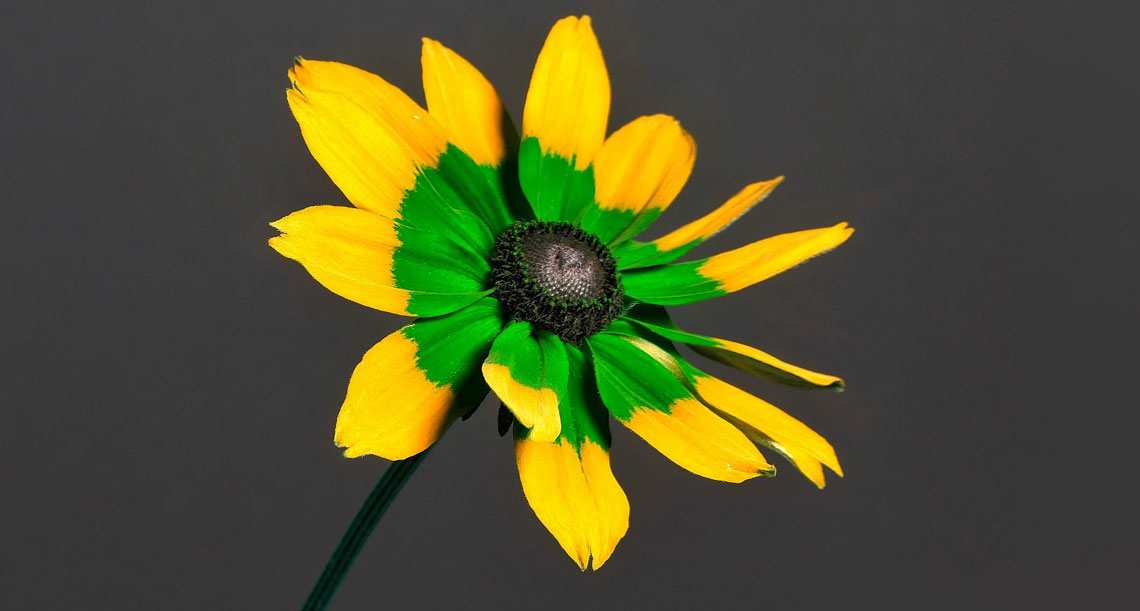
The colors that bees and other pollinators actually see in plants
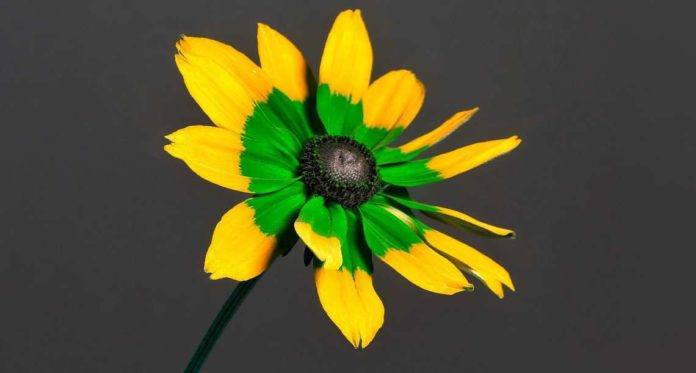
In the third episode of the documentary serieslife in color, which premiered in February 2021 on the Netflix video platform, British naturalist and presenter David Attenborough follows, curious, the assembly of a camera with an ultraviolet filter. Pointed to a flower that looks entirely yellow, the device picks up, In real time, the image that reflects white light and simulates human vision and another that shows the result of ultraviolet light. "It looks like the flower has black marks on the petals", he says, admired, when observing the ultraviolet image and pointing to the traces that appear near the flower core. “Many birds, lizards, insects and some fish see ultraviolet. They're reacting to things we can't see", watch him.
"Color can be crucial in the lives of animals. But understanding how they perceive color is not easy", continua Attenborough, explaining that they can be critical to ensuring survival, by allowing them to hide from predators or become visible to a partner. The same happens with plants. "The colors that the flowers display evolved to attract pollinators. They were not molded to the human vision", observes ecologist Maria Gabriela Camargo, from the Phenology Laboratory of the Universidade Estadual Paulista (unesp) in Rio Claro, one of the organizers of a collection about the evolution of flower colors, bringing together articles published in the scientific journal Frontiers in Plant Science between may of 2020 and july this year. The edition brings together studies from several countries, including from Brazil, who seek to deepen this universe.
Flowers have been in the world for at least 180 millions of years and, over time, have improved the intensity and distribution of their colors. Despite other signs of communication - such as the shapes of the petals and their aromas -, colors play an important role in this attraction game. the red of the roses, which acquired a connotation of seduction in the human world, goes unnoticed to the bees, that don't have photoreceptors for that color in their eyes: they see the green, the blue and the ultraviolet. Already a flower easily identified as pink, for people, can be blue for these insects. "Until very recently it was not considered that the ability to perceive color differed between different groups of pollinators", highlights the botanical Montserrat Arista, of the University of Seville, in Spain, and main organizer of the thematic volume.
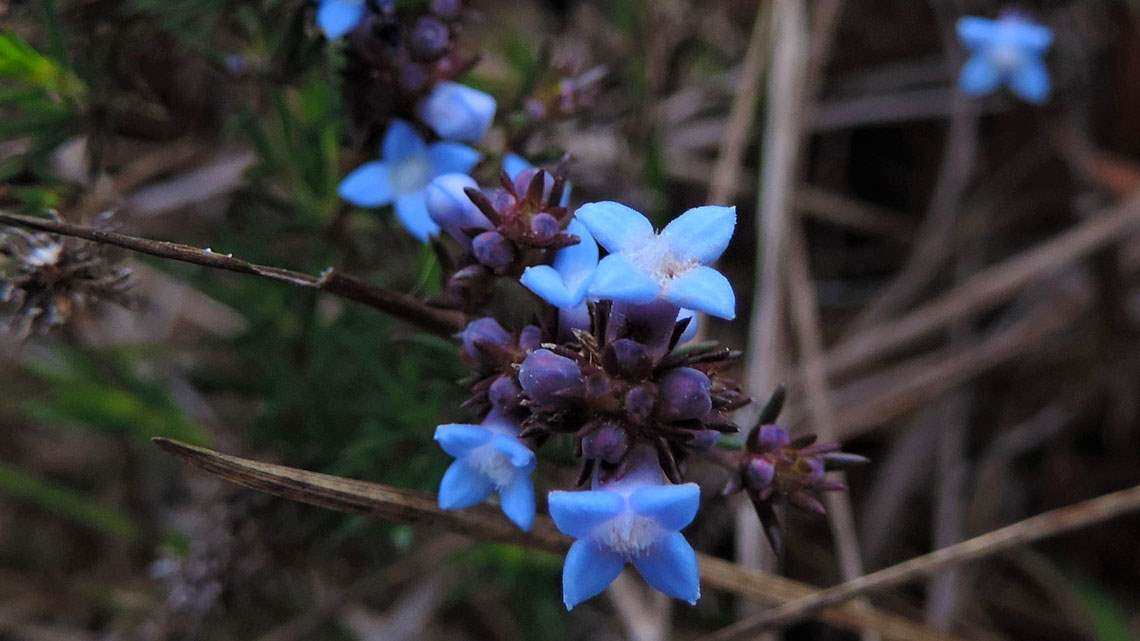
contrast analysis
Based on this difference in color perception by bees, the main pollinators on the planet, the biologist Amanda Martins, PhD student under the supervision of biologist Patrícia Morellato, Claro Rio de Unesp, analyzed the contrast between the colors of the flowers and leaves of 43 Cerrado plant species pollinated by these insects, comparing the contrast in the dry season (with yellowish leaves) and in the rainy (in which the leaves are green).
For this, used a spectrophotometer, device that identifies the wavelength emitted by each color, and a model that simulates the bees' vision based on the sensitivity of the three photoreceptors in their eyes.. The results indicated that the flowers maintain the contrast in relation to the leaves in the background despite the change in the color of these leaves in each season.. "This can be especially good for plants that bloom in the transition between seasons and seem to have adapted to seasonality in a strategic way", reflects Camargo, who participated in the research.
When they fly over the flowers at a distance of more than 1 metro, bees save energy using just one photoreceptor, the green. The result is a monochromatic vision – for us, it would be like seeing in black and white. "The contrast against the background is important for the flowers to be visible and attract the bees. when closer to the target, the insect activates the other photoreceptors to visualize the contrast, the brightness and saturation that flowers emit", Details Martins.
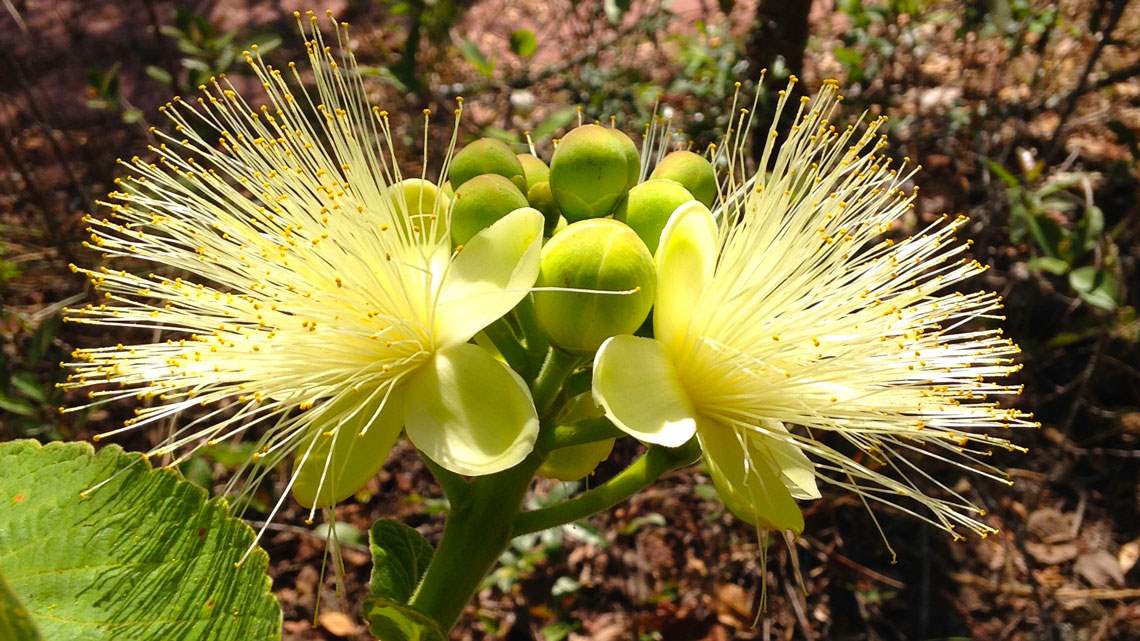
Perception of processes
"It's not just the color of the flower that's important, but its contrast with other structures, that can change throughout the year. Like this, we tried to understand how seasonality could interfere in this process", explica Morellato, co-author of the article.
in a first step, the researchers classified, according to human vision, the colors of 140 plant species – 74% pollinated exclusively by bees - collected in a patch of Cerrado in the municipality of Itirapina, interior of São Paulo. White were the most frequent (52%), followed by the roses (21%), yellow (17%), verdes (5%) and red (5%). After, rated 99 flowers under the bees' vision: the blue-green color represented 50% Sample, followed by green (18%), blue (13%), green-ultraviolet (12%) and blue-ultraviolet (6%).
in the last step, they bent over the 43 species that had flowering records in a database maintained by the research group and analyzed the contrast of each of them. The contrasts did not differ, but stop 22 species the peak of flowering occurred in the rainy season, between october and march, when there are higher values of achromatic contrast, based on green drum only, that allows you to see details amidst a profusion of shoots and leaves. Others 21 bloomed in the drought, between april and september, with higher values for color contrast, which can maximize the possibility of detecting flowers in a context where they are rare.
“It's important to understand the processes behind the color patterns we see. For us, a white flower may not stand out in the dry season, when the leaves are yellow. But, for a bee, it can be visible and attractive because the ultraviolet causes this contrast", comments ecologist Carlos Eduardo Pereira Nunes, Postdoctoral researcher in bee pollination at the University of Stirling, no UK, who did not participate in the study. "The results bring more pieces to understand what is important to bees and how the co-evolution between them and flowers occurs", complements.
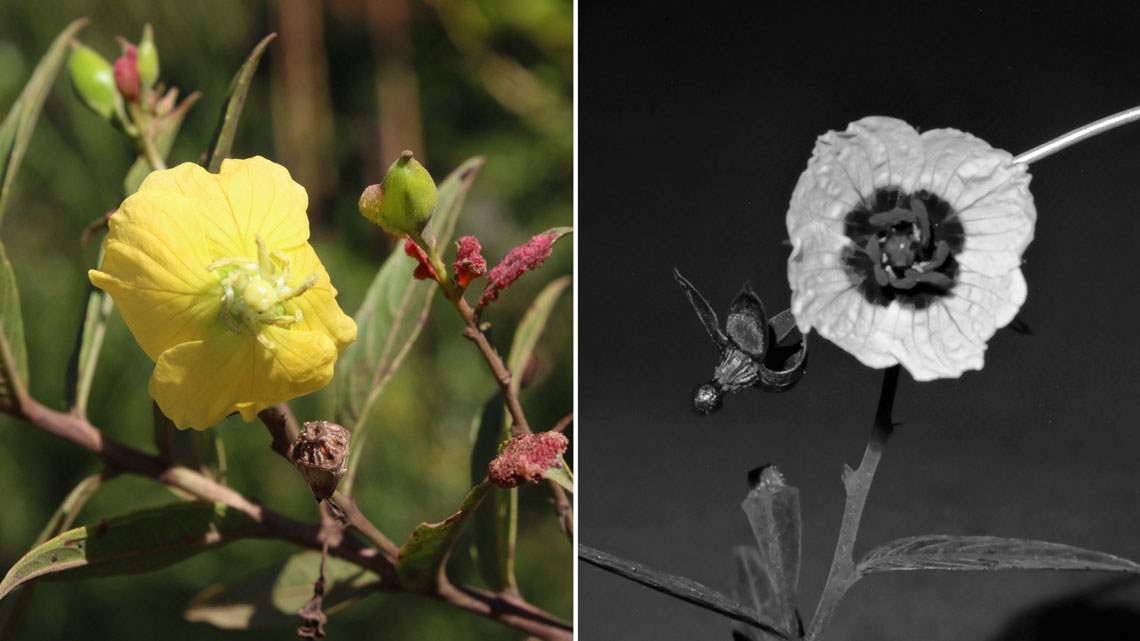
inside the flowers
The play of colors is not only important in the contrast between the flowers and the background formed by the vegetation, but also inside the flower itself. Contrasts can help animals get to pollen faster, following paths formed by dashes, lines or smudges called nectar guides - work like runway signal lights at an airport.
In collaboration with colleagues from Unesp's Botucatu campus, Camargo searched for color combinations in the ultraviolet range in 80 Cerrado plant species. Collections were made in Botucatu, at the Santa Barbara Ecological Station, municipality of Águas de Santa Bárbara – both in São Paulo – and in the Serra da Canastra National Park in São Roque, Minas Gerais.
Even a flower that looks uniform may have an area that reflects ultraviolet light and one that absorbs it., forming a pattern as in about 30% of plants photographed with an ultraviolet filter. It is the case ofLudwigia nervosa, with the yellow of its petals disturbed only by a discreet green near the core. with the filter, the central area of the flower takes on large, sharp dark contours.
When crossing the data, the researchers noticed that most flowers with these patterns are pollinated by bees. "The trend is for bees to look for the darkest part, that absorbs ultraviolet light", Camargo explains. Hummingbirds, on the other hand, prefer uniform flowers, without nectar guides. They also noticed that related species show similar patterns., even if they are not the same color. The results were detailed in an article published in May inFrontiers in Plant Science.
element fusion
The pink tones that form spots around a yellowish core in the orchidCattleya walkeriana seem to have a random distribution. But the label, that resembles a petal in the central region of the flower, tends to preserve a more intense color. And that seems to matter, according to researchers from the Federal universities of Uberlândia (UFU), from Sao Paulo (USP) and the Botanical Garden of Rio de Janeiro (JBRJ) who measured the saturation (the degree of color purity) from 30 flores, using a model that simulates the vision of bees. "The lip would be the part that most caught their attention, who see it in a darker tone", explains biologist Vinicius Brito, and UFU.
Human eyes easily distinguish the elements of the flowers of these orchids: three sepals positioned more outwardly, two petals and the lip, a bottom flap that might look like a lip. For bees, however, color saturation causes petals and sepals to fuse. "The lip showing to be the least subject to saturation change and the most attractive to bees is important because it is where they need to land for pollination to occur", says Brito. According to the biologist
The study, published in november 2020 andFrontiers in Plant Science, also infers that, if for human eyes the lip of this orchid is all pink, for the bees it is blue. blue flowers, rare in human perception, they even seem to be commonplace for bees and other pollinators.. This is what a review that gathered research data from Brazil and other countries proposes. "We concluded that the blue pigment is rare, at least in part, because it is often difficult for plants to produce it. Evolution has only led them to this color when it brings them real benefit.: specifically, attract bees or other pollinating insects", wrote Adrian Dyer, from the Royal Melbourne Institute of Technology, in Australia, in a text to the websiteThe Conversation. Dyer is the first author of the review on blue published in January inFrontiers in Plant Science.

Predominance of blue
O, the bees that land on this orchid, attracted by the colors, are deceived. The pollen sticks to the visitor's back, that takes the reproductive particles to the next flower of the same species that the cheat, unable to collect for consumption from the hive. "We often think that animals dominate plants, but flowers also have control strategies", rating.
“We also found that the scarcity of blue flowers is due in part to the limits of our own eyes.. From a bee's point of view, attractive bluish flowers are much more common”, continues Dyer in the text, describing the comparison of data from Brazil, from Australia and Germany. “In the three countries, blue flowers predominated as seen by the bees, but that present other colors in the human vision", comments Gabriela Camargo, co-author of the article. She provided data collected during her postdoctoral internship in Serra do Cipó, in Minas Gerais, how bees and hummingbirds perceive the colors of 283 flower species.
In some cases, according to the architecture and specialization of the flower for pollination, hiding from bees is more advantageous than attracting them. O red is not attractive in the eyes of these insects, for example. But the contrasts can be similar between flowers with the configuration adapted to bees and others specialized in different insects, according to an analysis of 389 species visited by birds, bees and other insects. "We suggest that these flowers can use other strategies, that are not the colors, to avoid the bees, as odors", explains biologist Gabriel Coimbra, who published these results, obtained during graduation work at the Federal University of the State of Rio de Janeiro (single), in september 2020 and Frontiers in Plant Science, with collaborators from the JBRJ and the Experimental Station of Arid Zones, in Spain. "It is a question that is still open and we need more studies to unravel it."
“This new way of studying the evolution of floral color can provide basic information that can be applied to current practical problems related to agriculture or floriculture, as well as to the conservation of biodiversity”, highlights Montserrat Arista. "Understanding how pollinators perceive flowers can provide useful clues in the manipulation of plants used in our food, for example", complete Patricia Morellato. "We must be careful not to lose characteristics that make it visible to pollinators, which would make her less productive.”
Text: Sarah Schmidt | FAPESP Research Magazine* December 2021 30/12/2021
Matter extracted from: https://www.revistaplaneta.com.br/as-cores-que-abelhas-e-outros-polinizadores-realmente-veem-nas-plantas/

Sorry, the comment form is closed at this time.